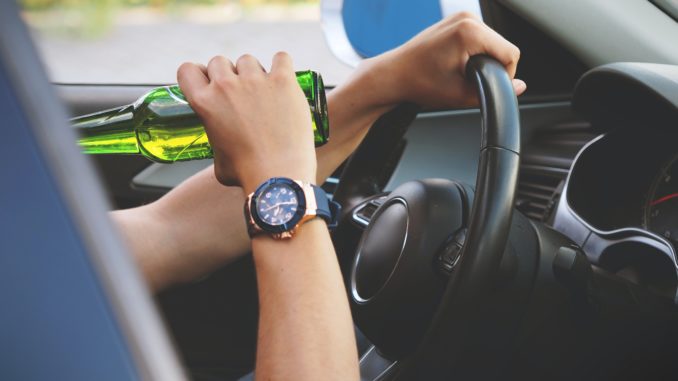
The COVID-19 pandemic is all-encompassing and longer-lasting than previous traumatic events. Lockdown, self-isolation, and quarantine have led to social disruption and limited access to support and quality health care. Negative local and global economic consequences also add stress. So, it’s not surprising that the pandemic is linked to a tendency of growing alcohol use.
The impact of coronavirus on alcohol intake is not yet clearly known. But the rates were high at the beginning of the pandemic. Experts emphasize the need for public health and medical resources to address the harm of so-called legal drugs.
Meantime, treatment and support organizations, including AA support groups on AddictionResource, face difficulties in providing their services. In response to growing demand, they go online. And they are not the only ones.
According to the market research by Nielsen, U.S. online sales of alcohol rose to 234 percent in March compared to the same time a year ago. In-store demand for tequila, gin, and pre-mixed cocktails jumped 75 percent. Wine sales spiked 66 percent. Beer popularity rose 42 percent.
Though the sales have since declined, they still remain much higher than a year ago, Nielsen reports.
The coronavirus epidemic has affected people in different ways. Worse health, loneliness, job loss, and financial problems are major stressors that contribute to substance use.
Those who already struggle with alcoholism are at higher risks of relapse. It’s vital to stick to treatment plans and not give up attending AA meetings, doctor’s appointments, or other services.
It is unclear whether Americans started to drink more or they simply changed their shopping habit as they couldn’t buy alcohol in beverage outlets and facilities.
According to a poll by Morning Consult (April 2020), only 16 percent of 2,200 respondents said they were drinking alcoholic beverages more. 55 percent reported that their drinking habits stayed the same. And 19 percent started to drink less.
A study done by Chinese scientists showed a rapid increase in alcohol consumption among people in China where the virus appeared first.
Historically, substance use rise due to terrorist attacks, wars, and natural disasters. But these are usually localized events. Speaking of the coronavirus, a pandemic of this scale affecting the whole world is something we’ve never faced before. Everyone is being affected.
Adults drink alcoholic beverages for different reasons, be it coping with stress or celebrating some holiday. But how can you tell that your alcohol consumption is unsafe?
According to The National Institute on Alcohol Abuse and Alcoholism (NIAAA), low-risk alcohol intake for men is 4 and fewer standard drinks on a single day. For women, it’s 3 or fewer drinks per day. If the norm is exceeded, it’s binge drinking.
Alcohol addiction, also known as ‘alcoholism’, is the most severe form of a drinking problem. It is a strong, often uncontrollable, desire to drink. There are several degrees of alcohol dependence and they don’t always involve binge drinking.
When an addict quits drinking, they may experience a withdrawal syndrome which includes a number of physical and mental symptoms. It’s not recommended to quit cold turkey if a person has a long-term history of alcohol abuse.
If you feel that your drinking becomes a problem, don’t wait until it starts to ruin your health, family, and other areas of life. There are AA meetings in the USA available for everyone who wants to start a better, healthier lifestyle.
What is an Alcoholics Anonymous meeting? It’s a gathering of a small group of individuals with a common goal of quitting alcohol and achieving lifelong recovery from addiction. The AA program is based on 12 Steps that address compulsive behavior, making amends, and learning to lead and enjoy a sober life.
There are different types of AA meetings:
Open Meetings
They are recommended for those who know nothing about AA organizations and the type of support they provide. It will help them understand what program is best for them. A person who abuses alcohol can attend it with his family member, friend, or other people who want to support him.
Closed Meetings
They are available only to alcoholics and are often limited to those who consider that meeting their homegroup. It involves discussing the impact of alcoholism with other members who had the same experiences.
Discussion Meetings
The person who leads the group chooses a topic and encourages the discussion. The topics relate to drinking and recovery.
Speaker Meetings
One or more people get up in the front of the room and share their story, mentioning their experience with the program and how it has benefited them.
Big Book Meetings
They are based on reading and discussion of the book written by founder Bill W. Obviously, it’s about the program’s philosophy.
12 Steps Study
These meetings are closed. A single step is discussed in one meeting.
One of the most common questions is how long do AA meetings last? An average length is 1 hour. It mainly depends on the number of people willing to speak.
Joining an AA meeting is easy. You can find where and when there is a meeting that fits your schedule and show up. An online AA meeting directory can help you.
It may seem that you have no problems with alcohol use. However, alcohol consumption can still harm your well-being and health even if you don’t develop an addiction.
Support Northern Colorado Journalism
Show your support for North Forty News by helping us produce more content. It's a kind and simple gesture that will help us continue to bring more content to you.
BONUS - Donors get a link in their receipt to sign up for our once-per-week instant text messaging alert. Get your e-copy of North Forty News the moment it is released!
Click to Donate
